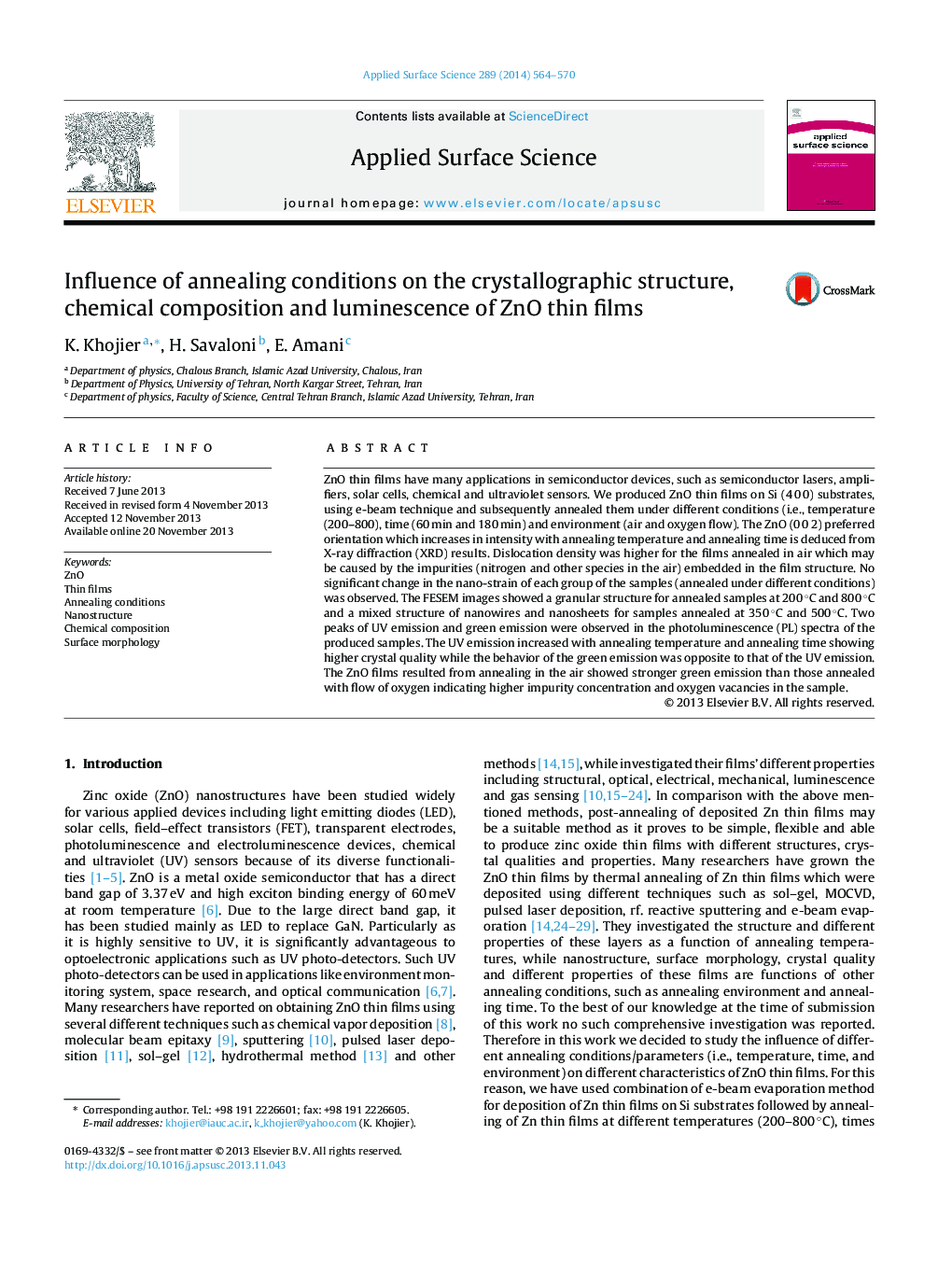| Article ID | Journal | Published Year | Pages | File Type |
|---|---|---|---|---|
| 5359023 | Applied Surface Science | 2014 | 7 Pages |
Abstract
ZnO thin films have many applications in semiconductor devices, such as semiconductor lasers, amplifiers, solar cells, chemical and ultraviolet sensors. We produced ZnO thin films on Si (4 0 0) substrates, using e-beam technique and subsequently annealed them under different conditions (i.e., temperature (200-800), time (60 min and 180 min) and environment (air and oxygen flow). The ZnO (0 0 2) preferred orientation which increases in intensity with annealing temperature and annealing time is deduced from X-ray diffraction (XRD) results. Dislocation density was higher for the films annealed in air which may be caused by the impurities (nitrogen and other species in the air) embedded in the film structure. No significant change in the nano-strain of each group of the samples (annealed under different conditions) was observed. The FESEM images showed a granular structure for annealed samples at 200 °C and 800 °C and a mixed structure of nanowires and nanosheets for samples annealed at 350 °C and 500 °C. Two peaks of UV emission and green emission were observed in the photoluminescence (PL) spectra of the produced samples. The UV emission increased with annealing temperature and annealing time showing higher crystal quality while the behavior of the green emission was opposite to that of the UV emission. The ZnO films resulted from annealing in the air showed stronger green emission than those annealed with flow of oxygen indicating higher impurity concentration and oxygen vacancies in the sample.
Related Topics
Physical Sciences and Engineering
Chemistry
Physical and Theoretical Chemistry
Authors
K. Khojier, H. Savaloni, E. Amani,
